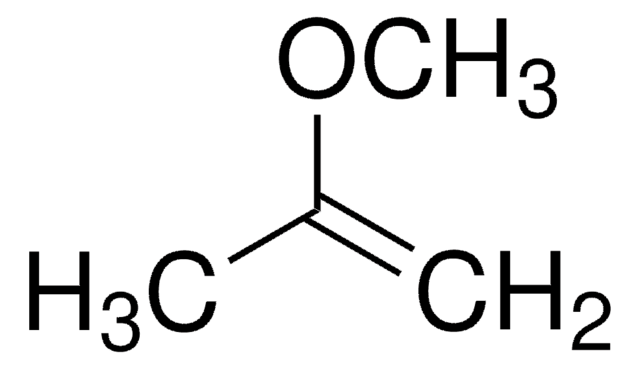Wichtige Dokumente
B85919
2-Butanol
ReagentPlus®, ≥99%
Synonym(e):
sec-Butylalkohol
About This Item
Empfohlene Produkte
Dampfdichte
2.6 (vs air)
Qualitätsniveau
Dampfdruck
12.5 mmHg ( 20 °C)
Produktlinie
ReagentPlus®
Assay
≥99%
Form
liquid
Selbstzündungstemp.
761 °F
Expl.-Gr.
9.8 %
IVD
for in vitro diagnostic use
Brechungsindex
n20/D 1.397 (lit.)
bp
98 °C (lit.)
mp (Schmelzpunkt)
−115 °C (lit.)
Dichte
0.808 g/mL at 25 °C (lit.)
SMILES String
CCC(C)O
InChI
1S/C4H10O/c1-3-4(2)5/h4-5H,3H2,1-2H3
InChIKey
BTANRVKWQNVYAZ-UHFFFAOYSA-N
Suchen Sie nach ähnlichen Produkten? Aufrufen Leitfaden zum Produktvergleich
Allgemeine Beschreibung
Anwendung
- As a precursor to produce 2-butanone in presence of KMnO4 oxidant and CPC (N-cetylpyridinium chloride) micellar catalyst.
- In the production of CH3NH3PbI3 perovskite films.
Rechtliche Hinweise
Sie haben nicht das passende Produkt gefunden?
Probieren Sie unser Produkt-Auswahlhilfe. aus.
Signalwort
Warning
H-Sätze
Gefahreneinstufungen
Eye Irrit. 2 - Flam. Liq. 3 - STOT SE 3
Zielorgane
Central nervous system, Respiratory system
Lagerklassenschlüssel
3 - Flammable liquids
WGK
WGK 1
Flammpunkt (°F)
80.6 °F - closed cup
Flammpunkt (°C)
27 °C - closed cup
Hier finden Sie alle aktuellen Versionen:
Besitzen Sie dieses Produkt bereits?
In der Dokumentenbibliothek finden Sie die Dokumentation zu den Produkten, die Sie kürzlich erworben haben.
Kunden haben sich ebenfalls angesehen
Unser Team von Wissenschaftlern verfügt über Erfahrung in allen Forschungsbereichen einschließlich Life Science, Materialwissenschaften, chemischer Synthese, Chromatographie, Analytik und vielen mehr..
Setzen Sie sich mit dem technischen Dienst in Verbindung.









